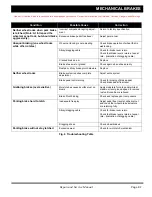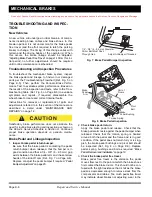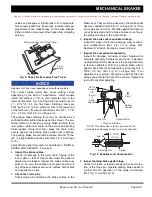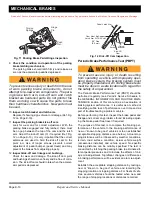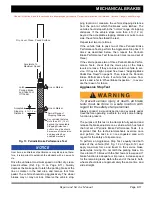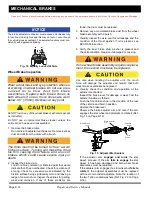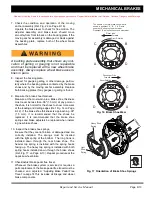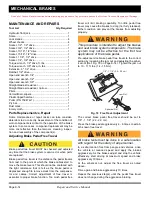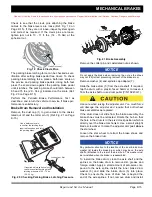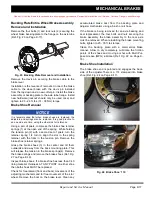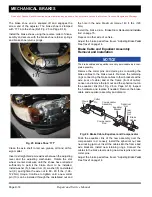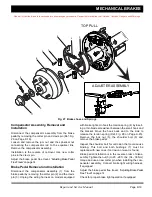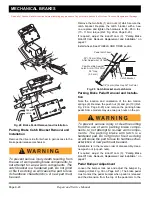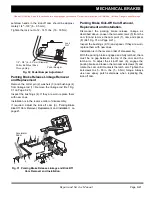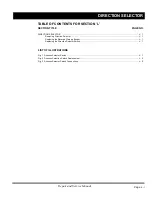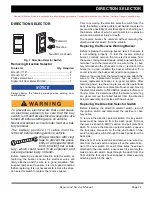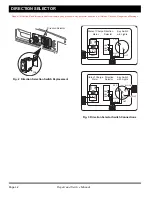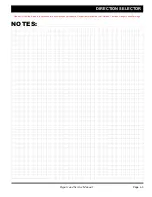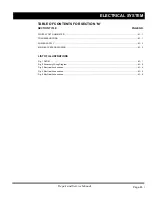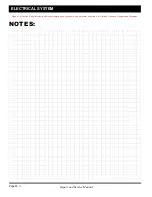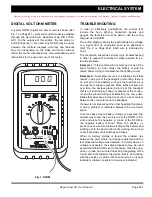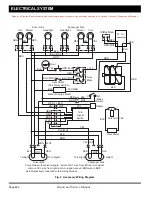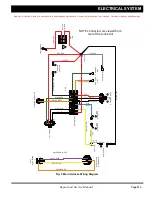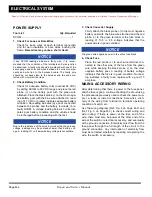
MECHANICAL BRAKES
Page K-19
Repair and Service Manual
Read all of Section B and this section before attempting any procedure. Pay particular attention to all Notices, Cautions, Dangers and Warnings.
Fig. 27 Brake shoes and Springs
Compensator Assembly, Removal and
Installation
Disconnect the compensator assembly from the brake
pedal by removing the cotter pin and clevis pin (Ref. Fig.
26 on Page K-18).
Loosen and remove the jam nut and the spherical nut
connecting the compensator rod to the equalizer link.
Remove the compensator assembly.
Installation is the reverse of removal. Use new cotter
pins in the clevis pin.
Adjust the brake pedal free travel. “Adjusting Brake Pedal
Free Travel” on page 14
Brake Pedal Removal and Installation
Disconnect the compensator assembly (1) from the
brake pedal by removing the cotter pin (2) and the clevis
pin (3). Unplug the wiring harness on models equipped
with brake lights. Unhook the torsion spring (4) by insert-
ing a thin blade screwdriver between the small hook and
the bracket. Move the hook back and to the side to
release the torsion spring (Ref. Fig. 28 on Page K-20).
Remove the lock nut (5), the shoulder bolt (6) and
remove the brake pedal.
Inspect the shoulder bolt for corrosion that could cause
binding. This bolt and both bushings (7) must be
replaced with new ones if corrosion or wear is found.
Brake pedal installation is in the reverse order of disas-
sembly. Tighten the nut (5) to 25 - 29 ft. lbs. (34 - 39 Nm)
torque and use a new cotter pin when installing the com-
pensator assembly. Connect brake light wiring harness,
if equipped.
Adjust the brake pedal free travel. “Adjusting Brake Pedal
Free Travel” on page 14
Check for proper brake light operation if equipped.
ADJUSTER ASSEMBLY
TOP PULL
1
2
3
3
4
4
5
6
8
9
10
11



